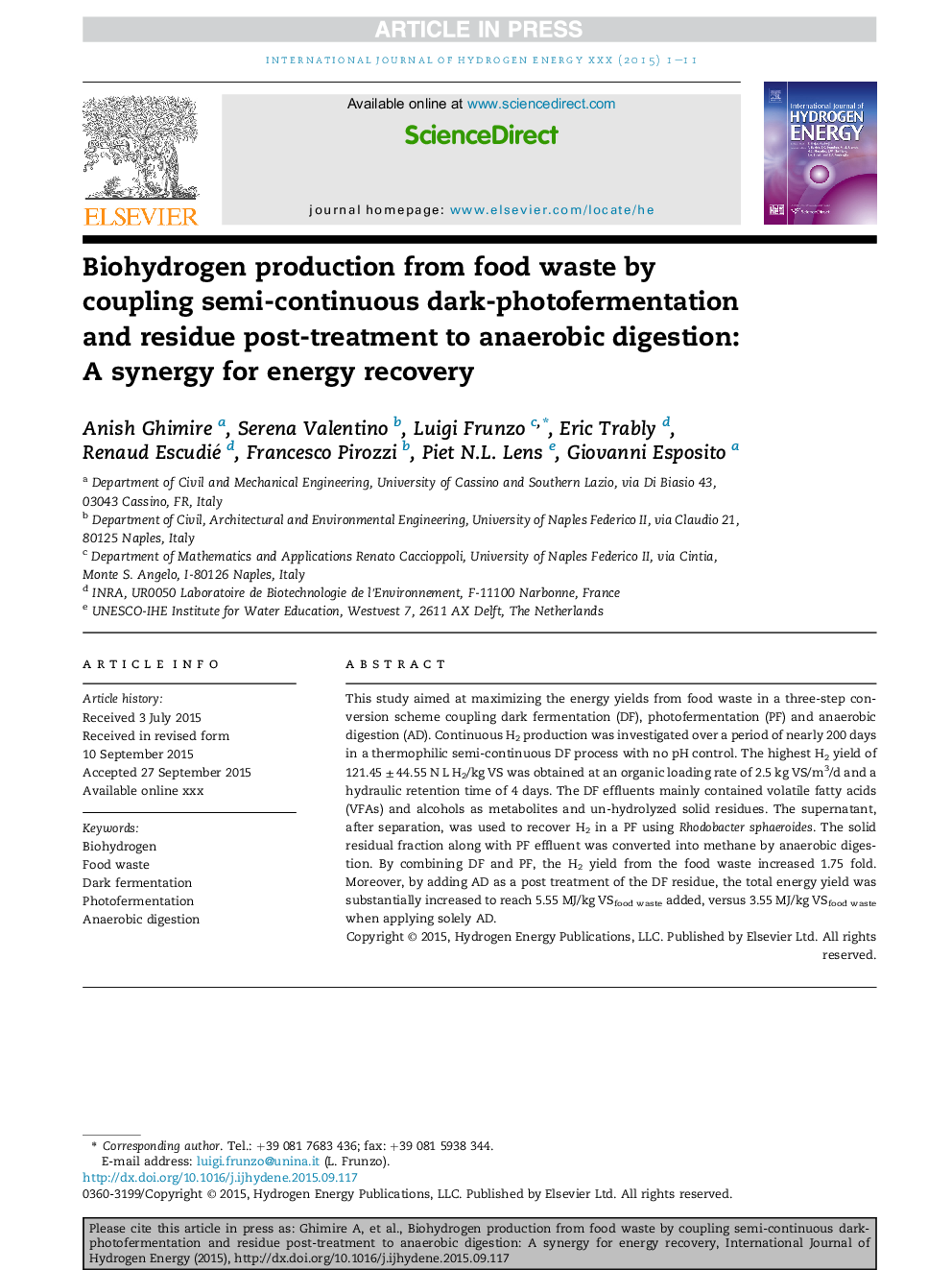| Article ID | Journal | Published Year | Pages | File Type |
|---|---|---|---|---|
| 7713185 | International Journal of Hydrogen Energy | 2015 | 11 Pages |
Abstract
This study aimed at maximizing the energy yields from food waste in a three-step conversion scheme coupling dark fermentation (DF), photofermentation (PF) and anaerobic digestion (AD). Continuous H2 production was investigated over a period of nearly 200 days in a thermophilic semi-continuous DF process with no pH control. The highest H2 yield of 121.45 ± 44.55 N L H2/kg VS was obtained at an organic loading rate of 2.5 kg VS/m3/d and a hydraulic retention time of 4 days. The DF effluents mainly contained volatile fatty acids (VFAs) and alcohols as metabolites and un-hydrolyzed solid residues. The supernatant, after separation, was used to recover H2 in a PF using Rhodobacter sphaeroides. The solid residual fraction along with PF effluent was converted into methane by anaerobic digestion. By combining DF and PF, the H2 yield from the food waste increased 1.75 fold. Moreover, by adding AD as a post treatment of the DF residue, the total energy yield was substantially increased to reach 5.55 MJ/kg VSfood waste added, versus 3.55 MJ/kg VSfood waste when applying solely AD.
Related Topics
Physical Sciences and Engineering
Chemistry
Electrochemistry
Authors
Anish Ghimire, Serena Valentino, Luigi Frunzo, Eric Trably, Renaud Escudié, Francesco Pirozzi, Piet N.L. Lens, Giovanni Esposito,
